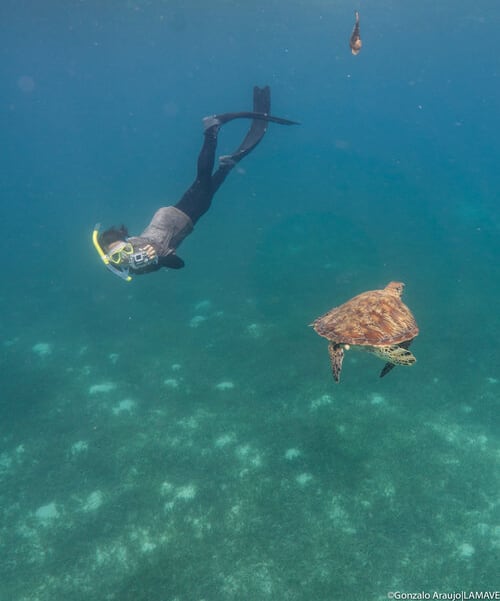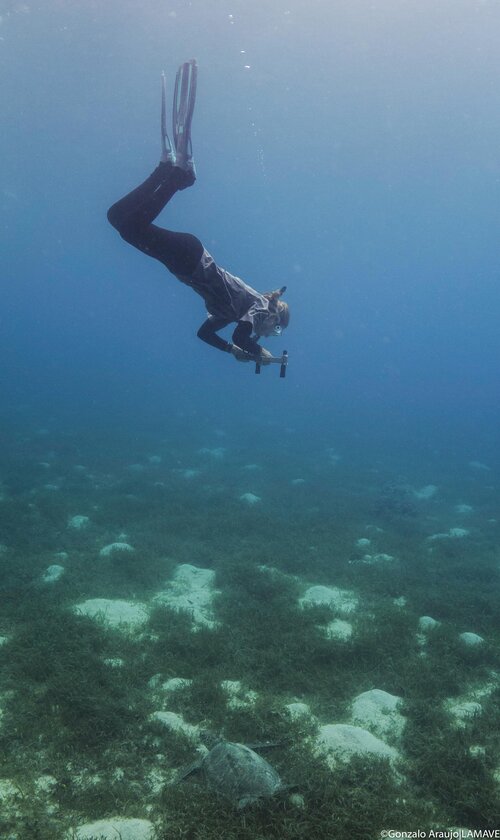The researchers use non-invasive techniques to measure and identify sea turtles.
Sea turtle researchers typically capture their subjects, tag their flippers and then measure their shells as a way to study them. But these methods don't always work and they tend to be more invasive than necessary. Tags can come off, and then the researchers don't have any way to identify if a turtle has indeed been studied.

Credit: Gonzalo Araujo|LAMAVE
LAMAVE researcher Christine Legaspi captures an image of the side of a green turtle’s head which will be used for photo-identification.
Researchers with the Large Marine Vertebrates Research Institute Philippines have expanded upon methods used to study whale sharks and other vertebrates that are sometimes difficult to catch and tag. They have employed lasers to take the needed measurements of these reptiles and have also employed digital cameras to photograph these animals, all without having to capture them.
Beautiful Dive Footage Of A Sea Turtle In The Philippines
“This is the first study to use stereo- photogrammetry as a method to collect the size of marine turtles and determine population dynamics," LAMAVE Researcher Christine Legaspi said in a statement detailing their methods. "Our findings revealed juveniles made up the majority of the population and they stayed over time, suggesting that this coastal area is an important habitat for turtles during this stage of their life."

CREDIT: GONZALO ARAUJO|LAMAVE
Stereo-photogrammetry is employed here to measure the carapace length of a green turtle.
This technique, called Photo-ID is minimally invasive because the turtles are not captured. The turtle's head is photographed and then re-photographed. This enables the researchers to identify turtles by their unique scutes on the side of reptiles' heads.
Data collected enables the researchers to better study site fidelity the reptiles have as they move around in the country's waters. Between May 2012 and October 2018, the researchers identified 82 turtles and determined that most stayed within the same area, showcasing strong site fidelity.
Laser-photogrammetry and stereo-photogrammetry was employed to determine sea turtle growth rates. These techniques measured the carapace of each sea turtle over time. This measurement technique enabled the researchers to establish growth rates without capturing or handling the turtles. They found that these young turtles had a growth rate of 3.4cm a year.
An abstract of the study, "In-water methods reveal population dynamics of a green turtle Chelonia mydas foraging aggregation in the Philippines," is on the Inter-Research Science Publisher website.



